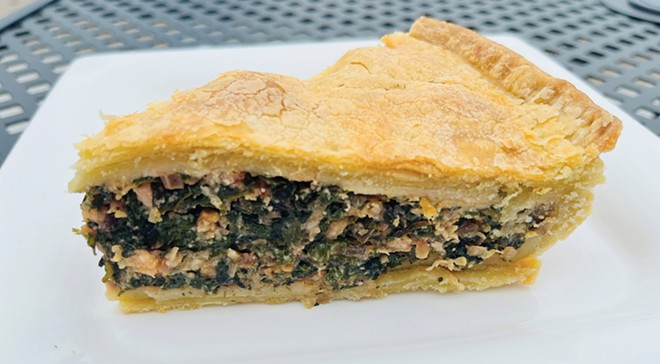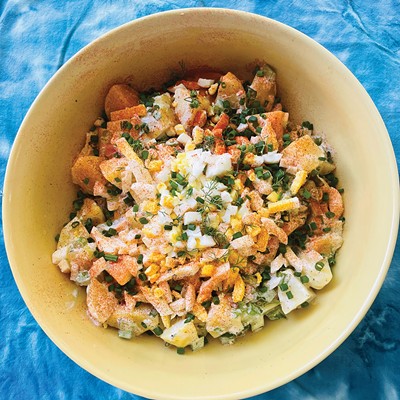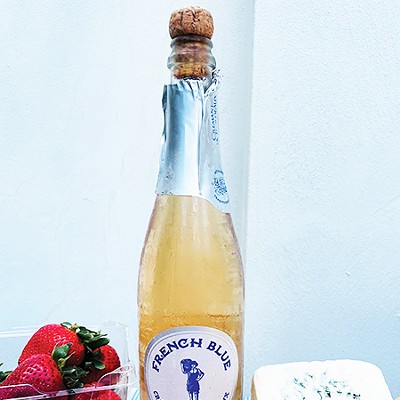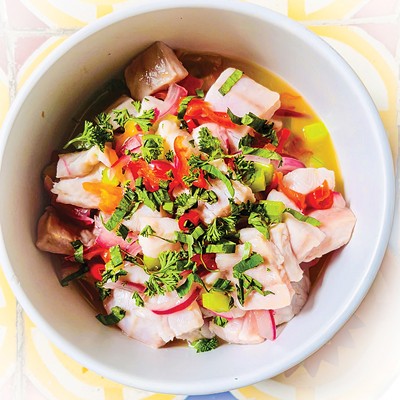Of all the plants in my vegetable garden, I have a special fondness for Swiss chard. Unlike asparagus, which makes an early spring appearance and then quietly goes to seed, or Brussels sprouts, whose tasty orbs do not come to maturity until the fall, Swiss chard graces my garden from late spring through the long, hot summer until the first frost. Rainbow chard is especially gorgeous, with celery-like stalks and crinkly leaves that come in a carousel of colors including pink, orange, red, purple, white and yellow. Unlike lettuce and spinach, which favor cooler weather, Swiss chard stands up to the heat of summer. Throughout the growing season, you can harvest the mature outer stalks and it will continue to produce more stalks from the center. Unlike spinach, which requires you to crawl around on your knees, Swiss chard is easily harvested while standing up.
Swiss chard is packed with nutrition. It's a good source of fiber and antioxidants. A small serving of cooked Swiss chard covers your daily requirement for vitamin K and is high in vitamins A, C and E as well as magnesium, potassium, iron, copper and calcium. Swiss chard is very low in calories and makes a colorful side dish as well as being a nutritious addition to soups, pastries and pasta dishes.
Chard is considered to be of Mediterranean origin. Europeans favor cooking the chard stalks instead of the leaves. Cookbook author Richard Olney, in Simple French Food, wrote that except for the south of France where chard leaves are used in stuffings, gratins and soups, "the green leafy parts ... are usually fed to the rabbits and the ducks." In European vegetable markets, chard is sold with long, wide stalks 4 to 6 inches wide. Americans, on the other hand, tend to prefer the leaves, and here chard is usually sold with short, narrow stalks.
The leaves of chard are prepared like spinach: sautéed briefly or blanched for one-two minutes in boiling salted water and plunged into an ice bath to stop the cooking. The stems are best sautéed in olive oil until tender, about three to five minutes. In recipes calling for both leaves and stems, always cook the stems first, until just tender, and then add the leaves.
Swiss chard makes a surprising appearance in pies sold in bakeries in the city of Nice, located on the French Riviera. Traditionally made with an olive oil pie dough (this is not a dairy country), both savory and sweet versions are offered. The sweet version, known as Tourte de blette sucrée, contains raisins, pine nuts, sometimes apple slices, a little rum and is dusted with powdered sugar. The savory version, Tourte de blette salée, contains pancetta (or bacon), onion and cooked rice.
Tourte de blette salée - savory Swiss chard pie
Adapted from Niçoise: Market-Inspired Cooking from France's Sunniest City by Rosa Jackson.
This savory pie makes a great picnic food or luncheon dish. I like to serve it with a small salad.
6 servings
Ingredients
For the olive oil pastry dough:
3 cups (400 g) all-purpose flour, plus additional for rolling the dough
10 tablespoons (150 ml) good quality olive oil
10 tablespoons (150 ml) hot water
1 teaspoon fine sea salt
1 egg, beaten, for egg wash
For the filling:
1 large bunch of Swiss chard – about 1 pound
¼ cup short-grain white rice, such as Arborio
1 red onion, finely minced
½ cup bacon, cut into ¼-inch dice
1 tablespoon extra-virgin olive oil
3 eggs
cup freshly grated Parmesan
2 tablespoons chopped flat-leaf parsley
A pinch of dried thyme or 1 teaspoon fresh thyme leaves
Sea salt and freshly ground black pepper
Preparation
For the pastry dough:
In a medium-size bowl, combine the flour and salt. Slowly drizzle in the olive oil and mix with your hands until coarse crumbs form. Pour in the hot water and mix with a bowl scraper or fork until the dough comes together into a ball.
Turn the dough out onto a lightly floured work surface and knead it gently for about 20 seconds, until it is soft and smooth. If the dough is too sticky to work with, roll it in a little extra flour. Do not overwork the dough.
Flatten the ball into a disk about 1-inch thick. Wrap it in plastic wrap and let it rest in the refrigerator for at least 30 minutes before using.
For the filling:
Bring a small pot of water to a boil. Add the rice and cook for 10 minutes, or until al dente. Drain and set aside.
Remove and reserve the chard stems and ribs. Discard any stem segments wider than ½ inch. Slice the leaves crosswise into thin ribbons. Slice the stems into -inch thick pieces and keep separate from the leaves.
In a sauté pan over medium-low heat, cook the onion, chard stems and bacon until the bacon turns golden and the stems have softened, about 8 minutes. Add the chard leaves and cook until wilted, about 3 to 4 minutes more.
Transfer the mixture to a large bowl and allow to cool a bit. Stir in the eggs, cooked rice, Parmesan, parsley, thyme. Mix until well combined. Season generously with salt and pepper.
Preheat the oven to 375 degrees F. Divide the dough into two pieces, one about twice as large as the other, and shape into disks about 1-inch thick. Set the smaller piece aside for the top crust. On a lightly floured surface, roll the larger piece out into an 11-inch round about -inch thick. Line a 9-inch pie pan with the pastry dough, letting it hang over the edges of the pan, and fill with the vegetable mixture. Then roll out the second ball of dough as thin as the first. Drape it over the top of the filling, press the edges of the pastry together, and, using scissors or a sharp knife, trim the overhang. Crimp the edges of the pastry with the tines of a fork. Brush the surface of the pastry with the beaten egg. Prick the pastry all over with a fork.
Bake the pie for about 40 minutes, until the crust is golden. Serve at room temperature.


















